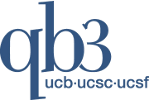About the RAN
The Recombinant Antibody Network is an international consortium of three expert centers at the University of Chicago, University of Toronto, and the University of California at San Francisco (UCSF) unified under a common set of goals, technologies, and operational procedures.
The multi-site rAB generation and validation approach has many advantages, including:
- Each site brings an extensive and varied set of skills to the RAN operation
While each site has some overlapping functions, such as phage display selection and rAB validation, the strength of the distributive model is that tasks can be divided up to exploit the unique capabilities available at each center, which can then multitask in parallel. Thus, the organization of the RAN sites has a built-in flexibility that allows it to readily respond to new challenges.
- Developing and evaluating multiple approaches for phage display selections and validation.
In parallel with high-throughput (HTP) production of quality rABs, the RAN sites are working as a team to develop and evaluate new methods and techniques to optimize the functionality and efficiency of the HTP pipeline. For example, RAN has recently evaluated the attributes and deficiencies of different antigen affinity tags, in parallel with exploring alternative methods for antigen supply, including modern in vitro translation and transcription (IVTT) and yeast display techniques. Importantly, several methods for evaluating specificity and affinity have also been worked on in parallel.
- Designing various robotic platforms will allow us to arrive at a better optimum than if only one or two centers were under development.
All three RAN sites are developing robotic platforms, which will operate together to allow the processing of hundreds of antigens each month followed by rapid large scale validation of rABs. Chicago’s robotic platform has been fully assembled and is being used for method validation and routine operations. Fully integrated robotic systems at Toronto and UCSF are expected to be up and running within the next six months.
- Leveraging resources across the three sites.
The RAN groups have multiple major grants that have been instrumental in building the infrastructure that directly supports the Protein Capture Project.
As a consequence of our philosophy of continual evolution and optimization, we see areas where further enhancements can be made with modest investments in instrumentation to make the system the prototype for what will be needed to undertake large initiatives like the NIH Affinity Capture Reagent project. Our proposed pipeline infrastructure has a modular architecture designed in such a way that it can be replicated at other institutions. We believe that multiple expert centers connect by technology and purpose is the most effective model to tackle the proteome. The organizational structure of the RAN network exemplifies the adage “the whole is greater than the sum of its parts”.
About the RAN
Latest publications
-
Conformation-specific Synthetic Antibodies Discriminate Multiple Functional States of the Ion Channel CorA. (published on 2023 Jul 01)
-
Structural basis for assembly and lipid-mediated gating of LRRC8A:C volume-regulated anion channels. (published on 2023 Mar 16)



